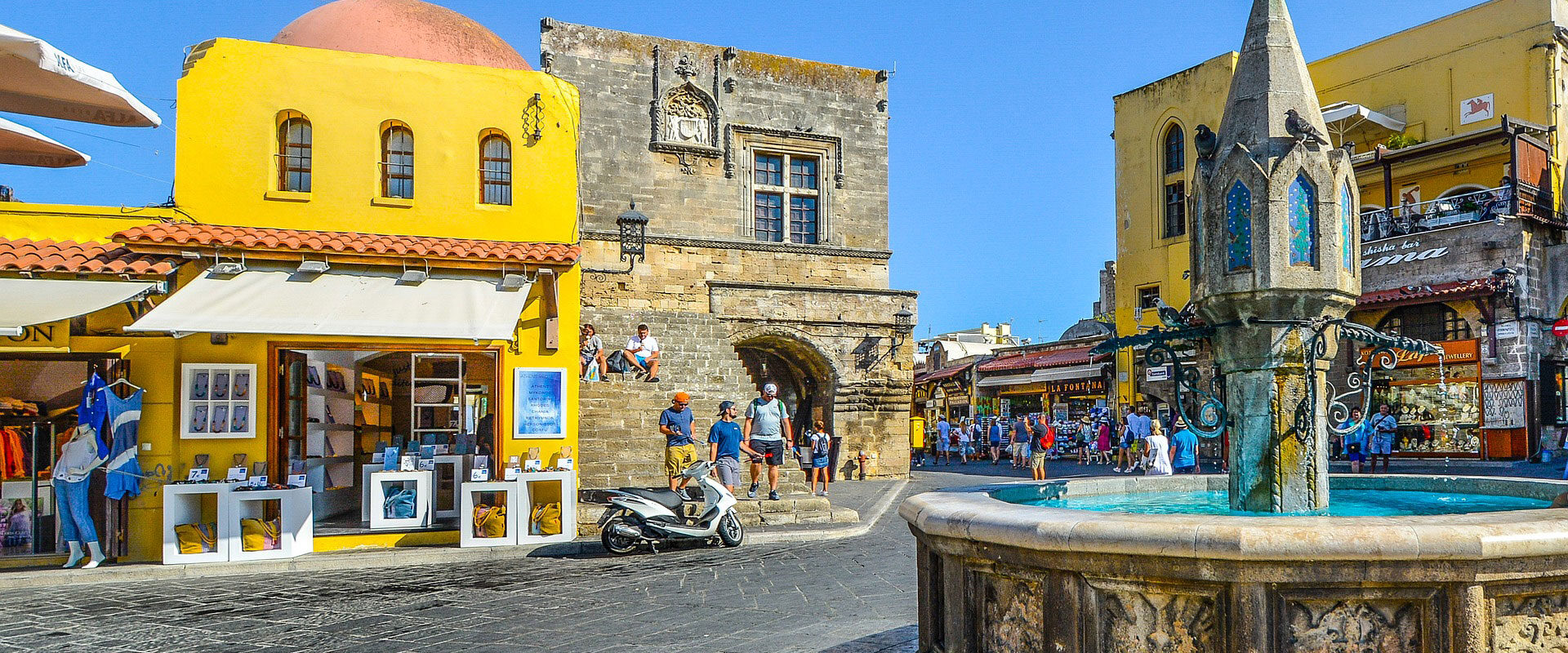
Rodos
Rhodes (Greek: Ρόδος) island in the Aegean Sea, the largest of the Dodecanese Islands, the easternmost island of Greece, excluding the island of Meis, the administrative center of the island of the same name. It is 18 km (11 miles) from the Bozburun Peninsula, the closest point to the Turkish coast. The 2019 population of the island is 130,000, of which 55,000 live in the city of Rhodes. The city of Rhodes is the center of the Greek administrative region of the Dodecanese Islands (Δωδεκάνησα, Dodekanisa) and the province of Rhodes (nomos), which includes the islands of Sömbeki, Herke, Ileki and Meis.
The Statue of Rhodes (Kolossos), considered one of the seven wonders of the world, was built in 280 BC by the Dorians at the entrance to the port of Rhodes. The castle and medieval quarter of the city of Rhodes, built by the Knights Templar, are on the UNESCO World Heritage List. There is also a Turkish minority of 5,500 on the island, which is concentrated in the area between Rhodes Diagoras International Airport and the city of Rhodes. Its interior is forested and Pinus brutia trees, also called Turkish pines, are covered with red pines. The island’s flora and fauna is generally considered to be more reminiscent of the western coast of Turkey than the rest of Greece. The most important settlement outside Rhodes at the northern tip of the island is Lindos on the southeast coast.
Name
Throughout its history, the island was known as Greek (Greek: Ρόδος) (Ródos). It was also called Lindos.[1][2] Also, the island is called Italian: da Rodi, Turkish: Rhodes, and Jewish Spanish: רודי (Rodi) or רודיס (Rodes).
The name of the island comes from the Ancient Greek: Rhódon (rose) and is sometimes referred to as the island of roses. The Travels of Sir John Mandeville erroneously reports that the old name of Rhodes was called “Collosus” by combining Colossus of Rhodes and Paul’s Epistle to the Colossians.[3] The name of the island may have been derived from the Phoenician word “erod”, meaning snake, as it was home to many snakes in ancient times.[4]
Geography
The island of Rhodes is shaped like a spearhead. With a length of 79.7 km and a width of 38 km, its total area is approximately 1,398 km² (540 square miles). The sea coast is about 220 km. The city of Rhodes is at the northern end of the island. It includes the ancient site and the modern trading port. The main airline gateway is Diagoras International Airport. IATA code: RHO). The airport is 14 km southwest of the city of Paradisi. The road network is spread out from the city along the east and west coasts. While the beaches are rocky, the interior of the island has arable land. Outside the city of Rhodes, there are small whitewashed villages and spa resorts on the island. These include Faliraki, Lindos, Kremasti, Haraki, Pefkos, Archangelos, Afantu, Ixia, Koskinu, Embona (Attavyros), Paradisi and Trianta (Ialysos). Attaviros mountain, with an altitude of 1,216 m, is the highest point of the island. Tourism is the island’s primary source of income.
Flora
The interior of the island is mountainous, sparsely inhabited and covered with pine (Pinus brutia) and cypress (Cupressus sempervirens) forests. Although the coast is rocky, the island has strips of arable land where citrus fruits, wine grapes, vegetables, olives and other crops are grown. The many flowering plants from which the island got its name are abundant.
Fauna
In 2005, it was revealed that the Rhodes fallow deer population is genetically different and urgently needed to be protected.[5] Greek: Petaloudes In the “Valley of the Butterflies”, large numbers of tiger moths and butterflies gather in summer.